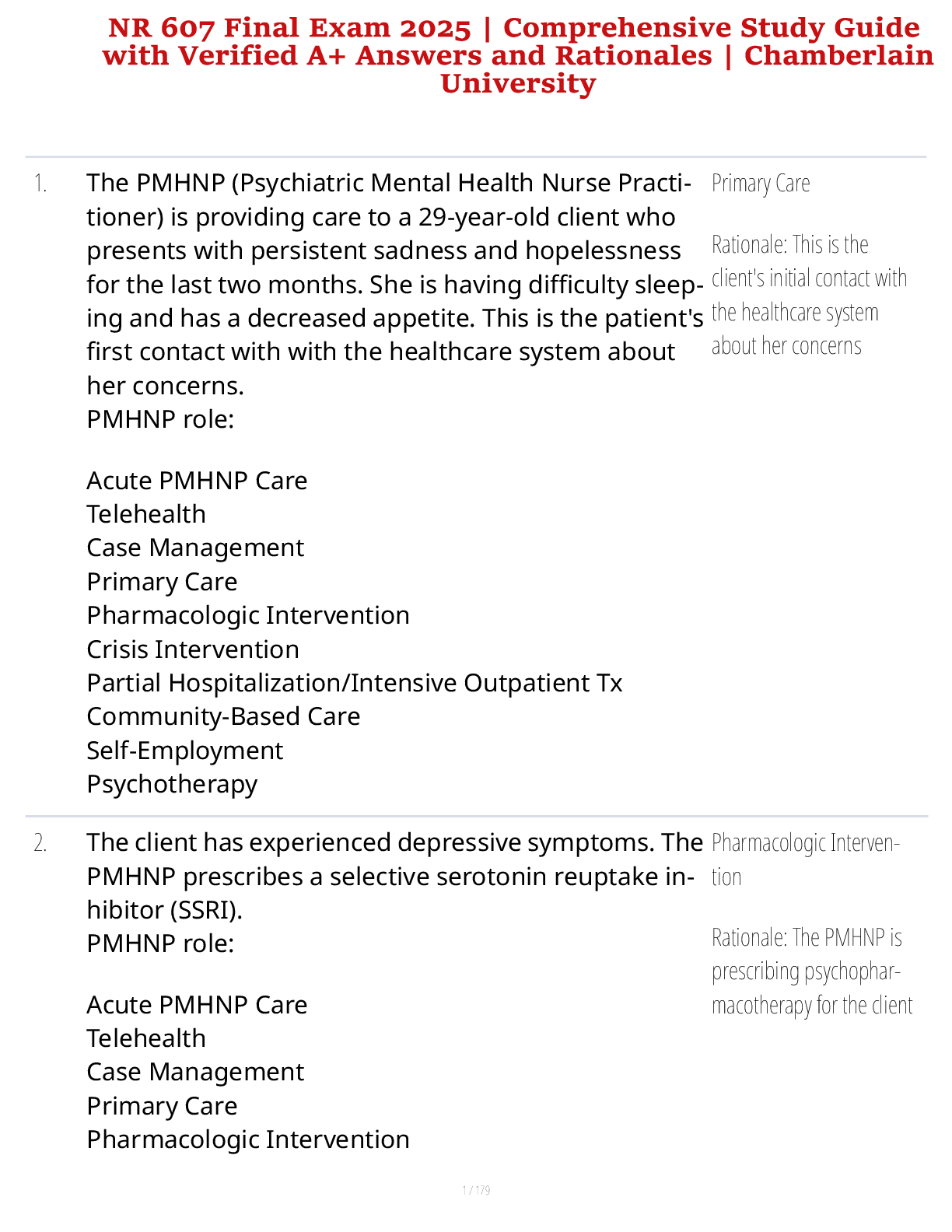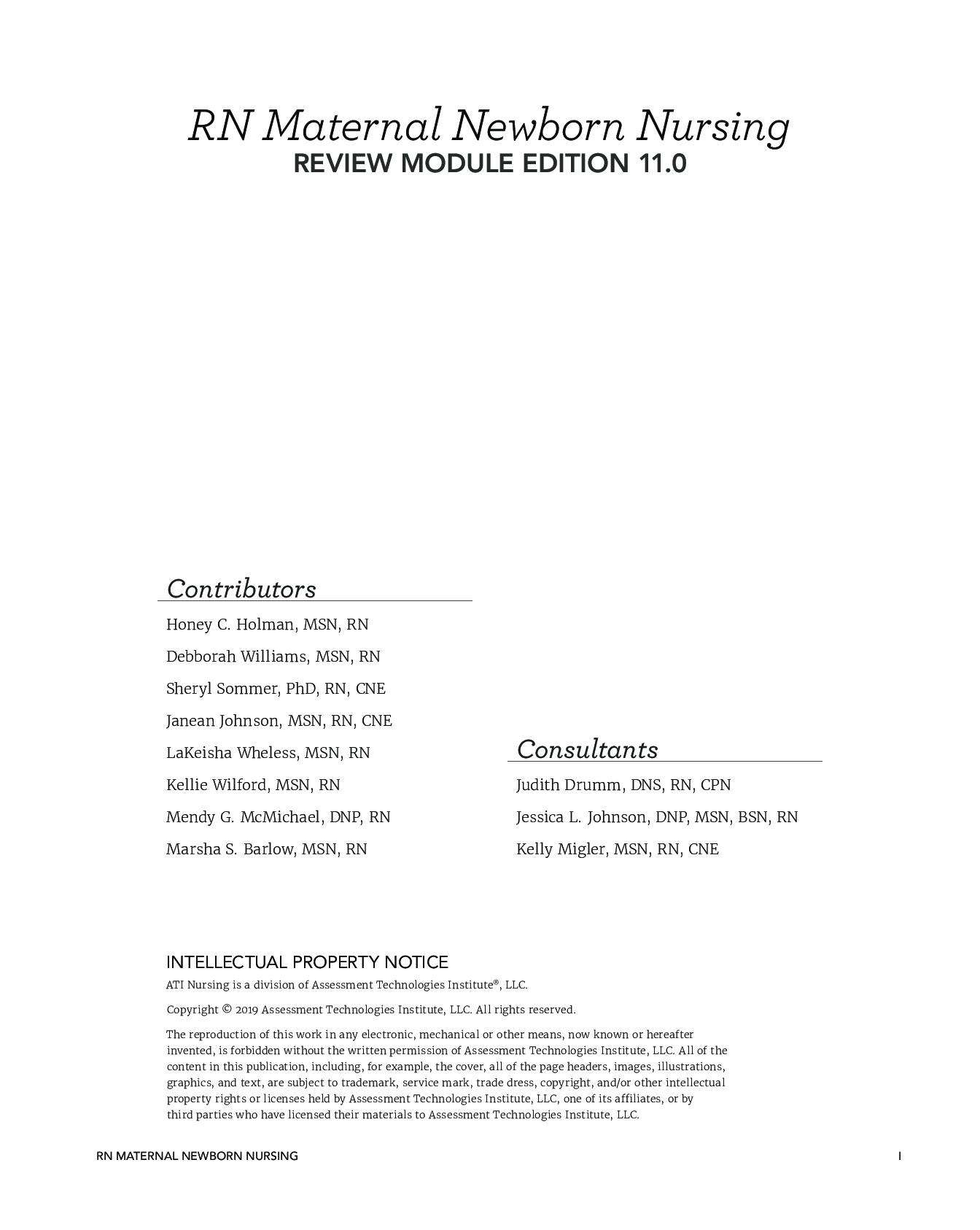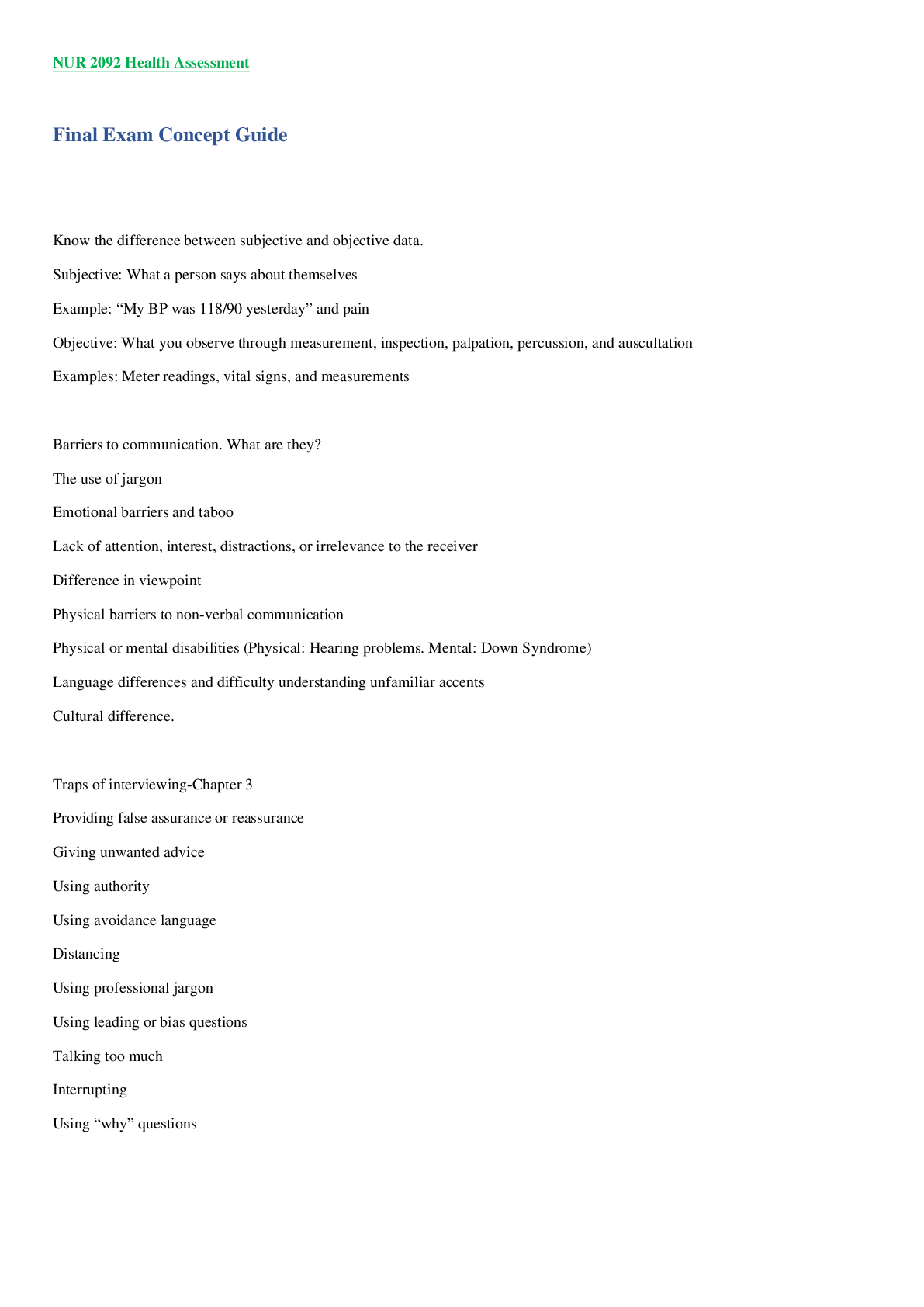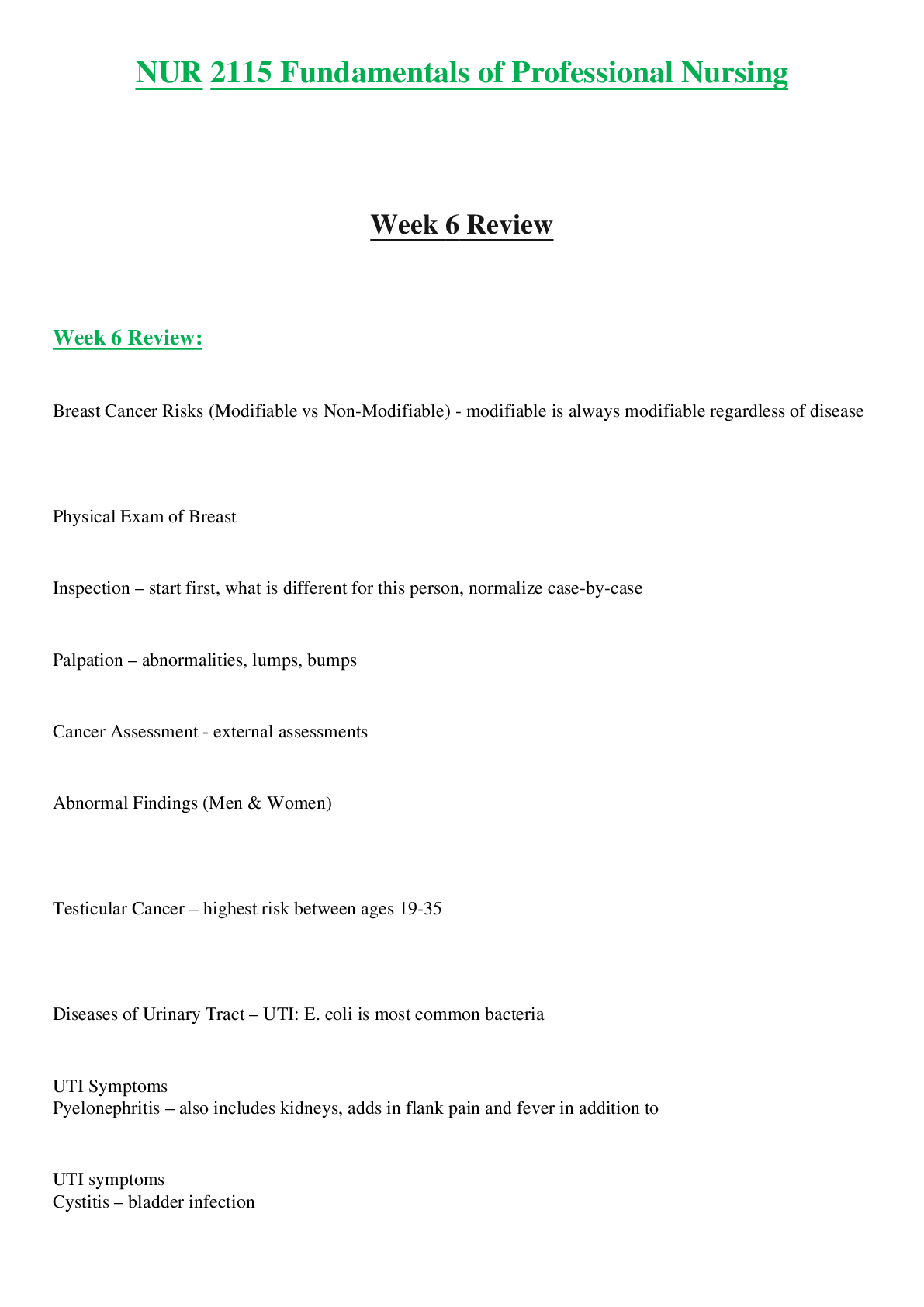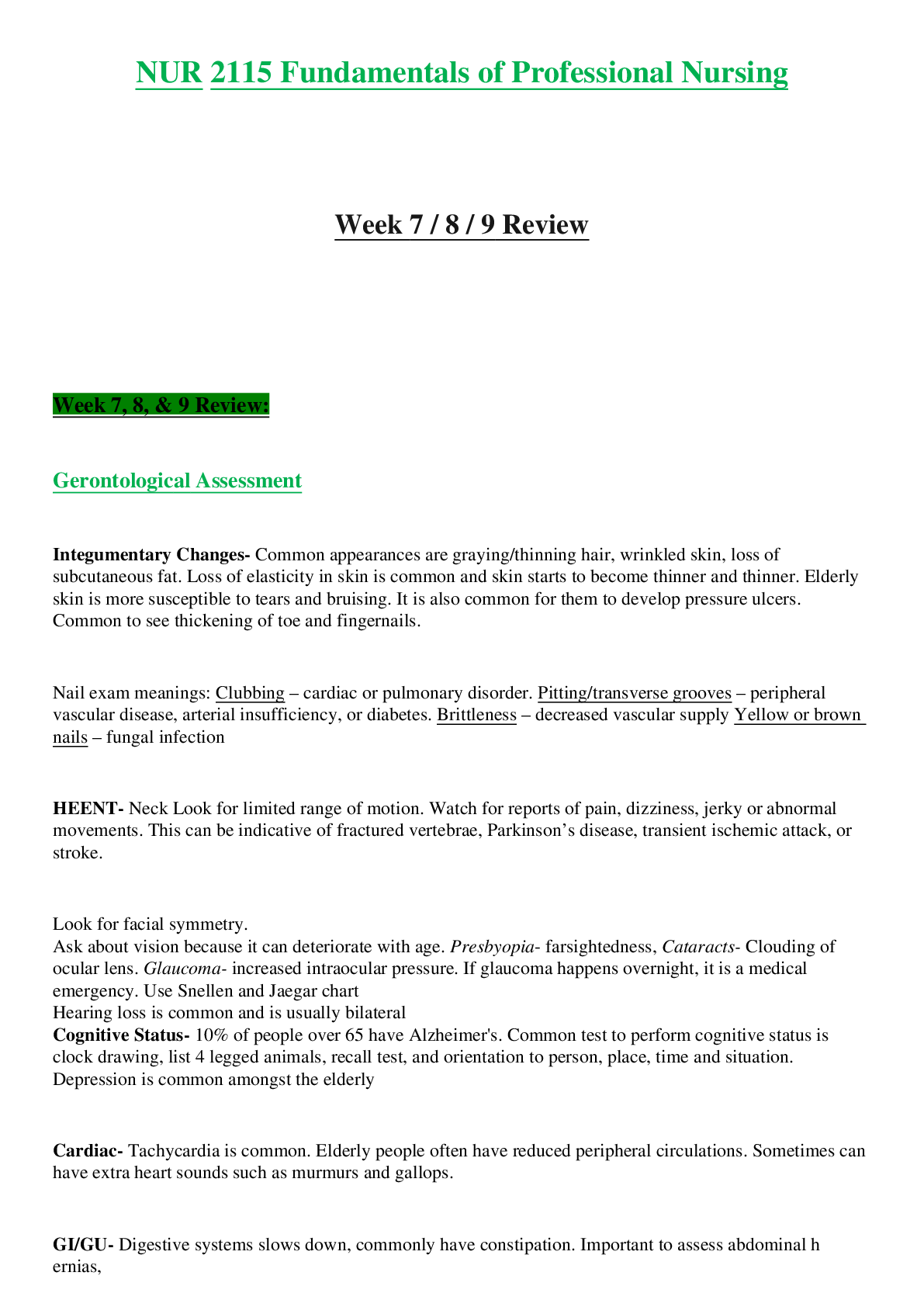Dimensions Final Study Guide Module 1 (Chapter 2,4,5 Nursing Now!)
Document Content and Description Below
Module 1 (Chapter 2,4,5 Nursing Now!)
Chapter 2
• Identify the “father of modern medicine” and key historical persons who advanced the nursing profession
Hippocrates was considered to be the
...
father of modern medicine. His beliefs focused on harmony with the natural law instead of on appeasing the gods. He emphasized treating the whole client-mind, body, spirt, and environment -and making diagnoses on the basis of symptoms rather than on an isolated idea of a disease
Florence Nightingale is universally regarded as the founder of modern nursing. Dedicated her life to improving health care and nursing standards. Played a huge part in the Crimean War and helped to improve nursing education, hospital conditions, sanitation, and health care in general. Opened the Florence Nightingale School of Nursing and Midwifery.
Isabel Adams Hampton Robb dedicated her life to raising the standards of nursing education in the United States. She was the director of the Illinois Training School for nurses, and some of her ideas were developed and implemented, such as a grading policy for students. She also advocated for the reduction of the long hours involved in training nurses. She headed the John Hopkins Training School for Nurses, and brought together leaders from key nursing schools to for the American Society of Superintendents of Training Schools for Nurses, and served as chairwoman. This group was the precursor to the National League for Nursing. Robb was also the first president of the American Nurses Association. She also helped develop the American Journal of Nursing, the first professional journal dedicated to the improvement of nursing.
Lillian Wald opened the Henry Street Settlement, a storefront health clinic in one of the poorest sections in the city of New York. This clinic allowed organization nurses to make home visits, focused on sanitary conditions, and children’s health. Wald became a dedicated social reformer, an efficient fundraiser, and an eloquent speaker. She is also credited with the founding of the American Red Cross’s Town and Country Nursing Service. She founded and became the first president of the National Organization for Public Health Nursing. Many child health and wellness programs in use today are based on her efforts.
Lavinia Lloyd Dock contributions as a reformer focused on the professionalization of nursing the equality of women. She wrote the first medication textbook for nurses, and worked along Lillian Wald and Isabel Robb. Spent most of her career dedicated to the pursuit of equal rights. She also believed poverty and squalor contributed to poor health, and dedicated herself to social reform to address these problems. One of the most influential leaders in the early 20th century.
Annie W. Goodrich provided nursing care at Lillian Wald’s Henry Street Settlement after receiving her nursing degree. She was known as an outstanding nursing educator and ran a number of nursing schools. She was appointed state inspector of nursing schools, a position that up until that time had only been held by physicians. She was the dean of the US army nursing school and Yale school of nursing. She established a nursing training program at Vassar College. She had demonstrated that teaching theoretical information in a classroom was just as important
in training highly skilled nurses in clinical practice. Her many writings about nursing education and her experiences with military nursing have been a great contribution to the nursing profession.
Loretta C. Ford is credited with founding the nurse practitioner (NP) practice. She worked with pediatrician, Dr. Henry K. Silver to form the first NP program after noticing a shortage on family physicians. Ford also became the founding dean of the University of Rochester School of Nursing and director of the Nursing Service at the University Hospital in 1972. She was inducted into the National Women’s Hall of Fame for being recognized as an internationally renowned nursing leader who has transformed the profession of nursing and made health care more accessible to the general public. She also won the Blackwell award, which is given to a woman who has shown exemplifying outstanding service to humanity.
• Review the evolution of symbols in nursing and significance of these symbols
In Modern society, the symbols connect the professions to their historical roots and provide the philosophical basis for the work they do.
.........................................................................CONTINUED...................................................................................
[Show More]
Last updated: 3 years ago
Preview 1 out of 50 pages

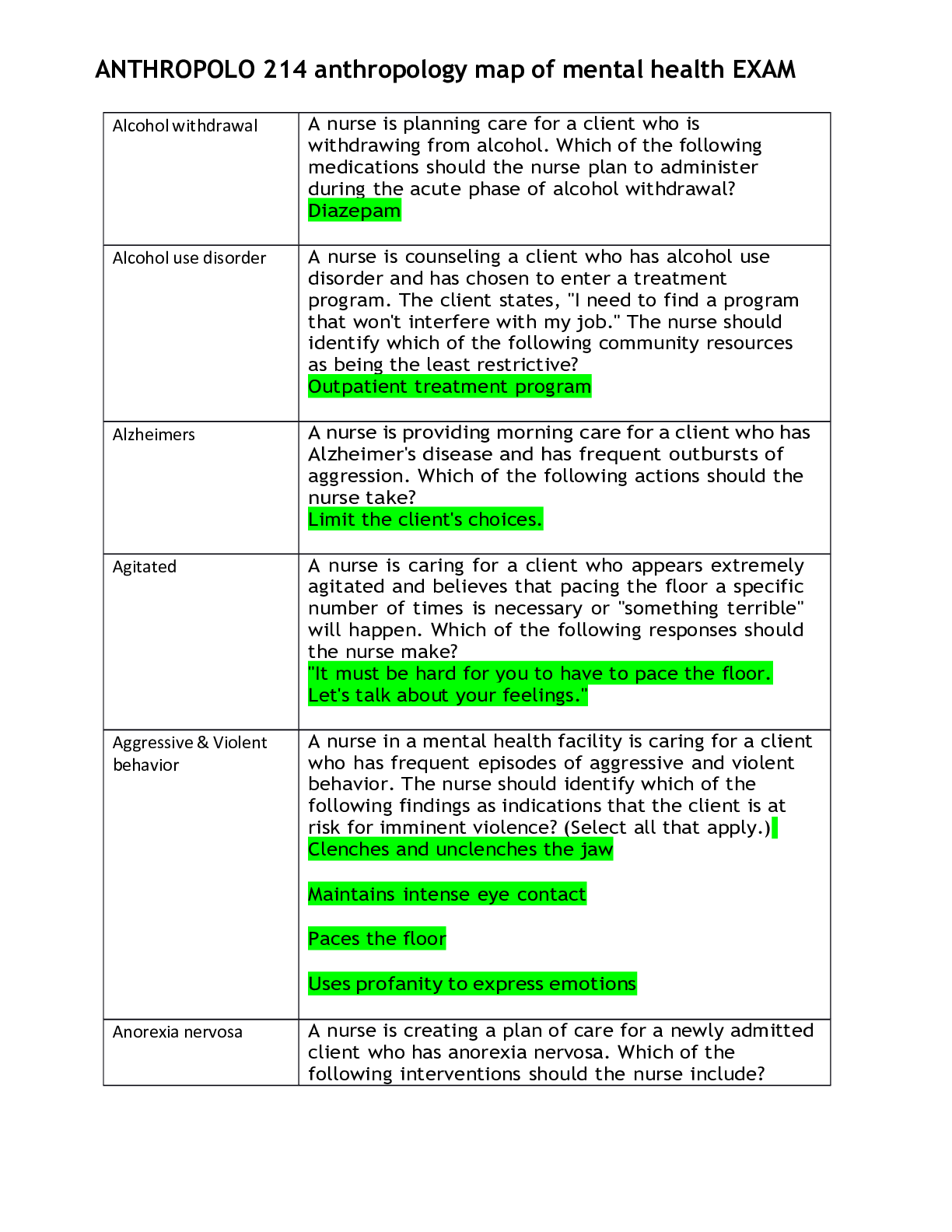
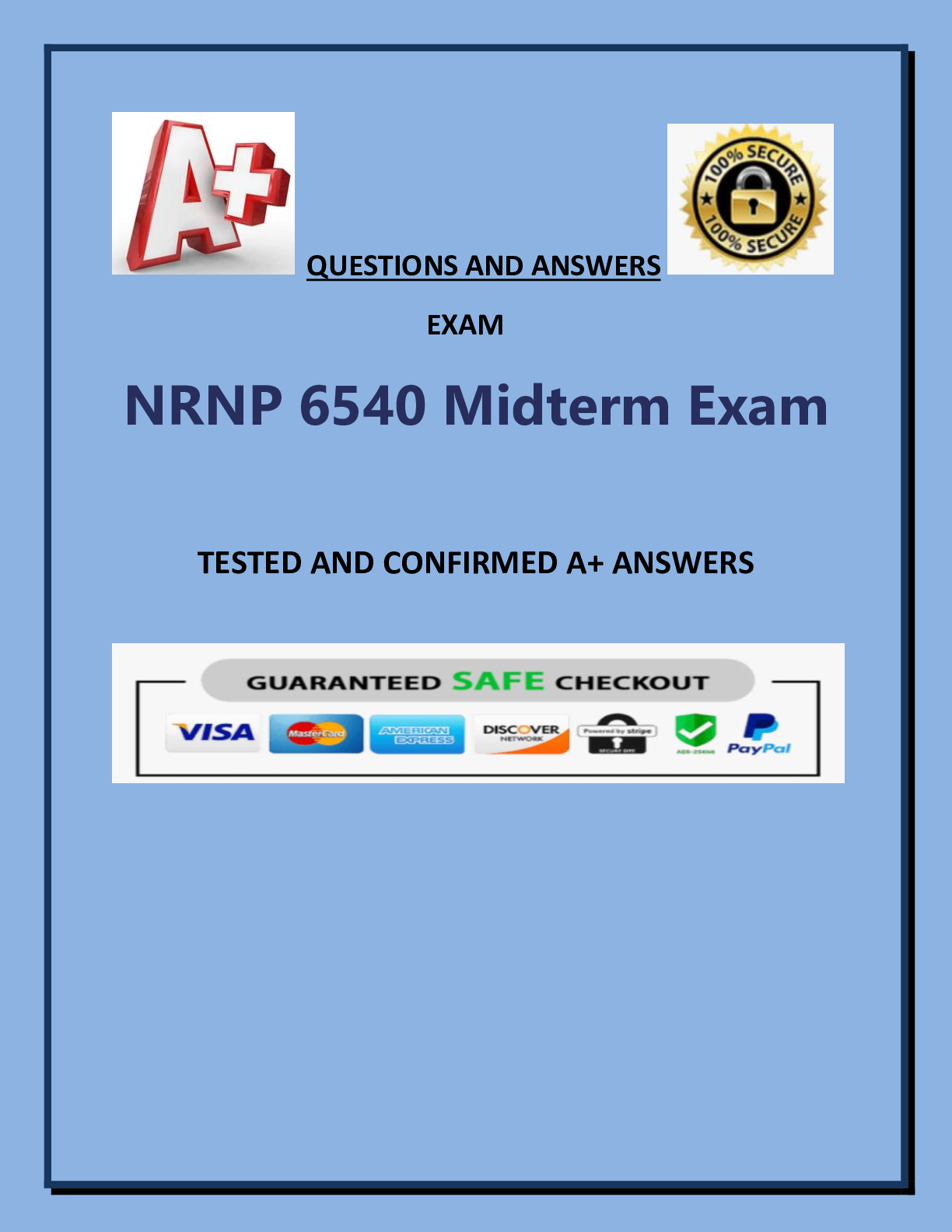


.png)

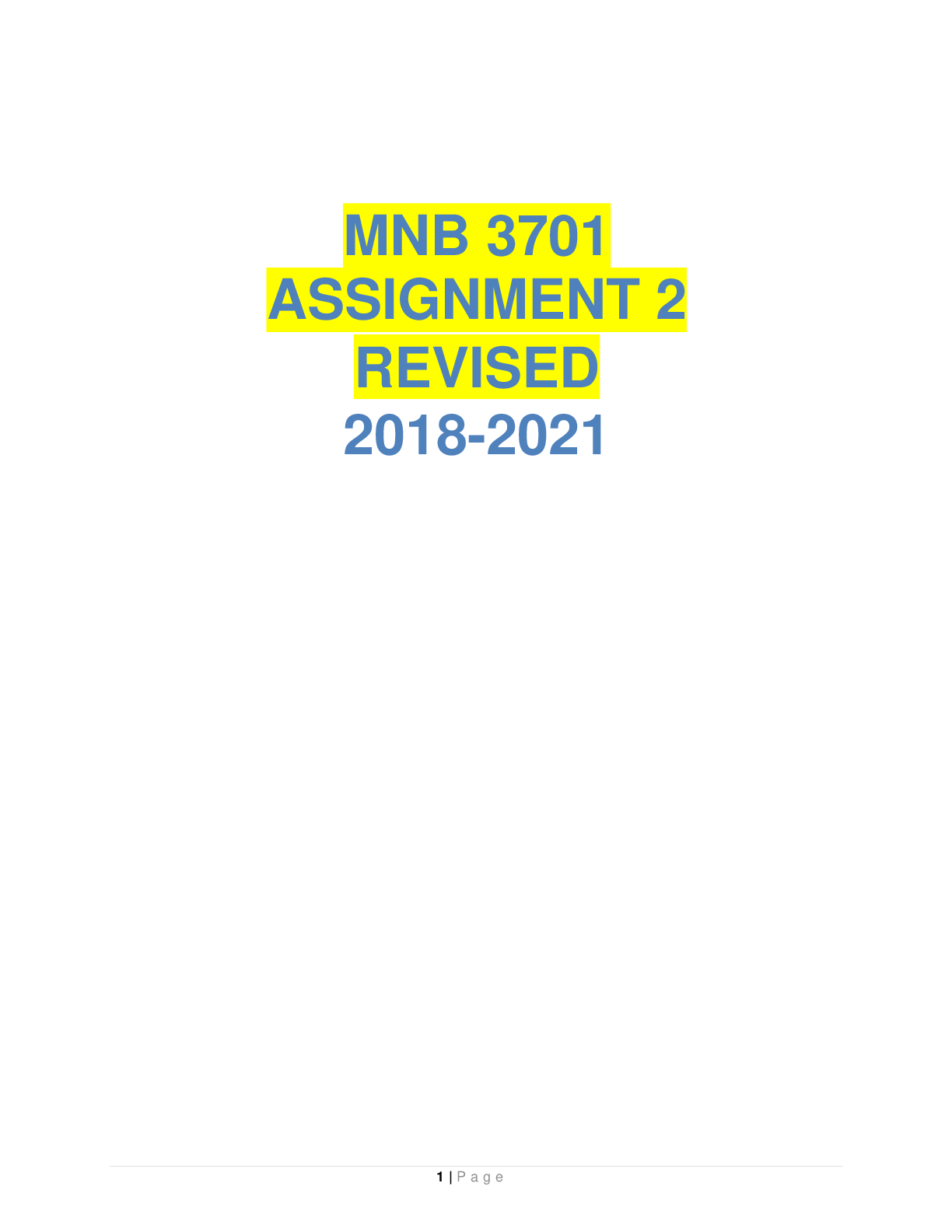
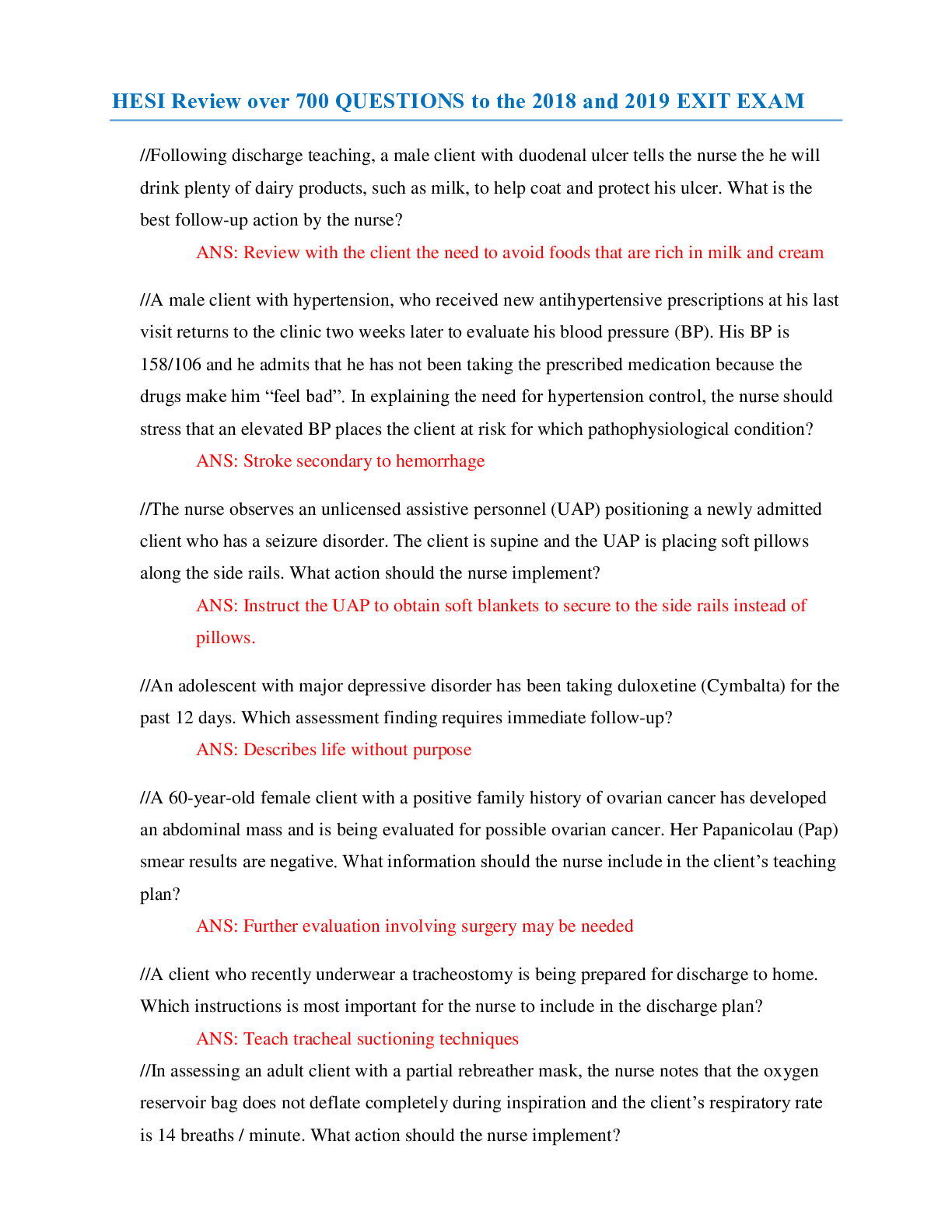

.png)


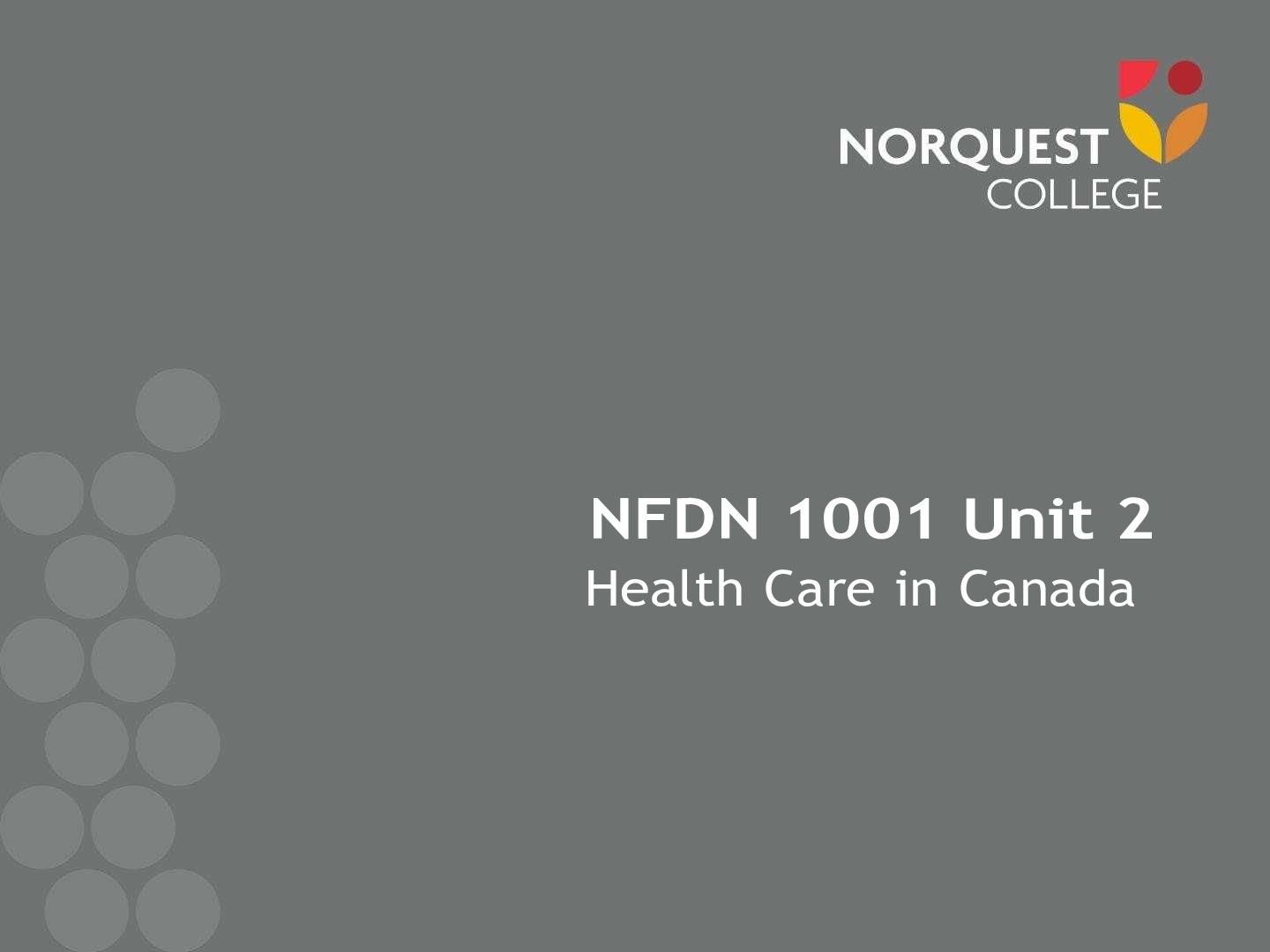


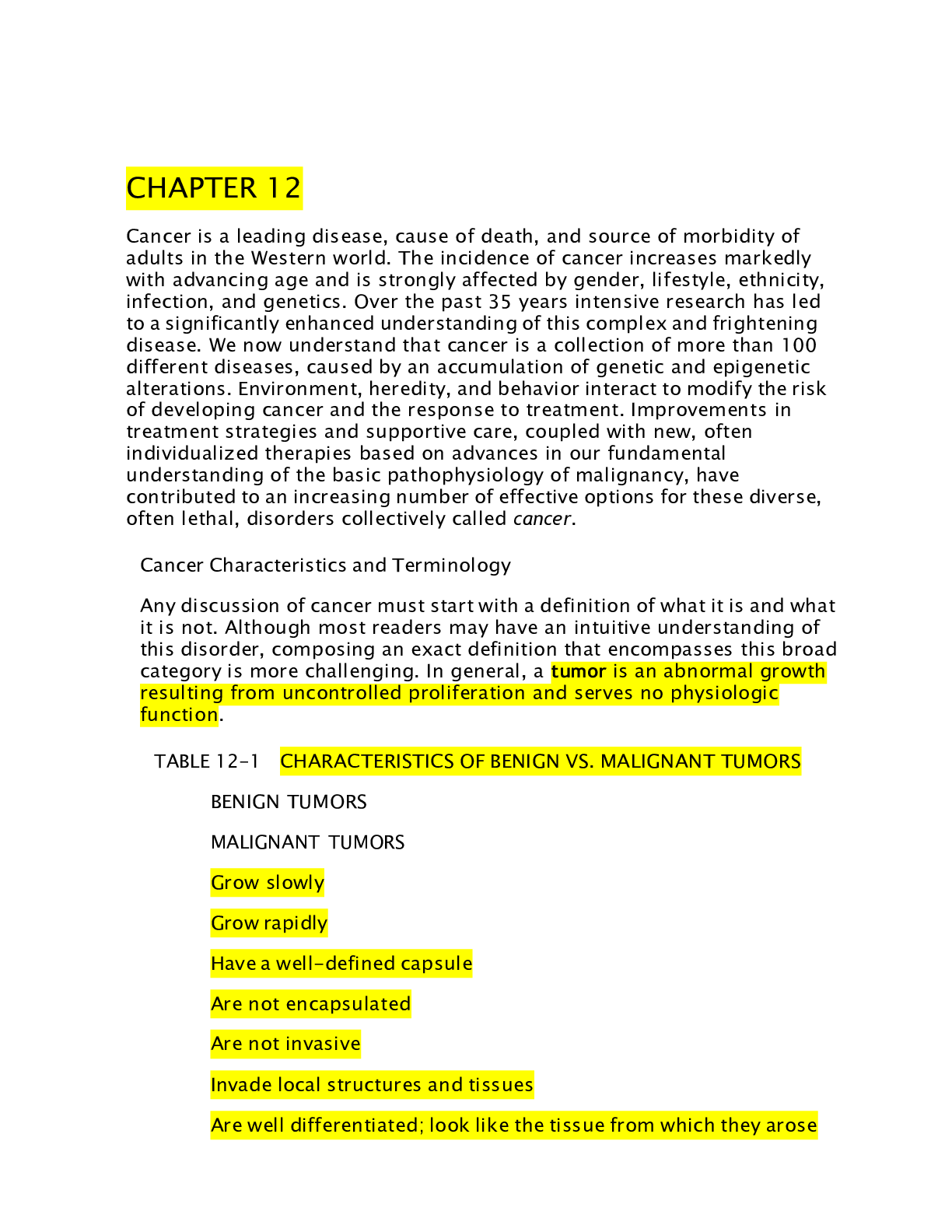

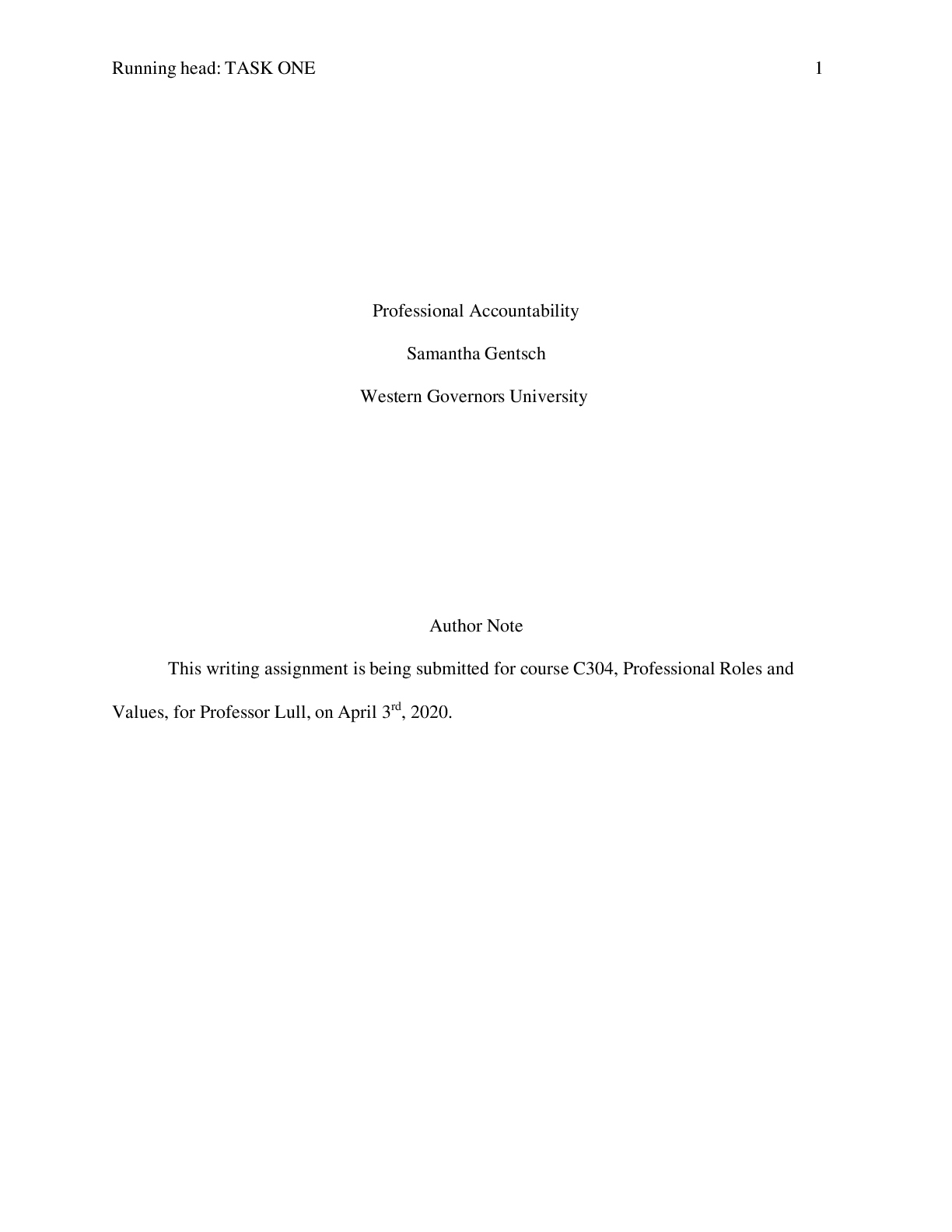
.png)


